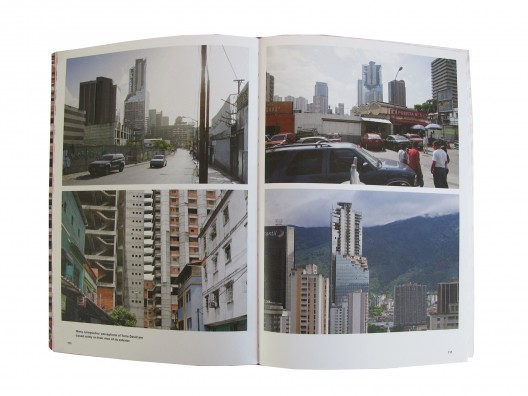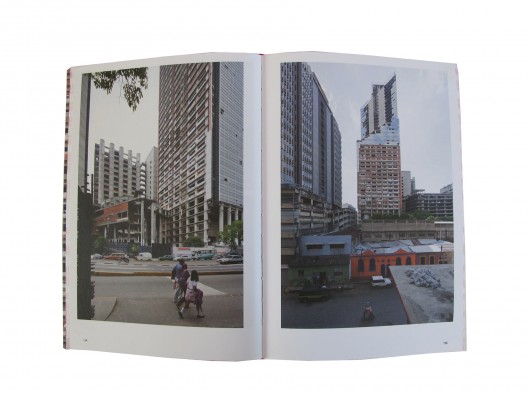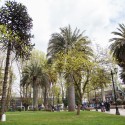Publicación de la semana: “Torre David – Informal Vertical Communities”

“Torre David – Informal Vertical Communities”
Editado por: Lars Müller Publishers
Idioma: Inglés
ISBN: 978-3-03778-298-9
Año: 2013
Autor: Urban-Think Tank Chair of Architecture and Urban Design
Dónde encontrarlo: En este link de Amazon
Sobre el libro:
La publicación de esta semana presenta un registro fotográfico y un análisis arquitectónico, cultural y social de la ocupación ilegal de la Torre de David, en Caracas, Venezuela. El edificio de 45 pisos, originalmente nombrado Centro Financiero Confinanzas y construido por el empresario David Brillembourg, nunca se terminó por la crisis económica que afectó al país en el ‘94, quedando completamente abandonado hasta 2007. Ese año comenzó a ser habitado por ciudadanos que no tenían una vivienda propia y criticaban la falta de políticas públicas en el país, por lo que transformaron la torre en una ocupación ilegal vertical. En el libro, se aborda cómo los habitantes distribuyeron los pisos del edificio, creando zonas específicas con habitaciones, iglesias, canchas de deportes, estacionamientos y almacenes.

Contenidos:
Preface
Alfredo Brillembourg & Hubert Klumpner
Introduction
Andres Lepik
Torre: A Graphic Novella
André Kitagawa with Urban-Think Tank
I: Past
Alfredo Brillembourg & Hubert Klumpner
II: Present
Alfredo Brillembourg & Hubert Klumpner
III: Possibility
Arno Schlueter, Jimeno A. Fonseca, Alfredo Brillembourg & Hubert Klumpner
IV: Potencial
Alfredo Brillembourg & Hubert Klumpner
Afterword
Christian Schmid
Appendix

Extracto:
“It is somewhat difficult to define the term “slum”. The current definition according to UN-HABITAT is based primarily on the lack of certain amenities, such as “durable housing of permanent nature that protects against extreme climate conditions”. This firt point alone does not apply to the current situation of most residents of Torre David because they are largely sheltered from the elements by the existing structure as well as by the walls they have built themselves. The arguments that follow – lack of Access to wáter and sanitary facilities – do not apply either, as most residents do have wáter connections (albeit in regulated quantities) and their own toilets”.









